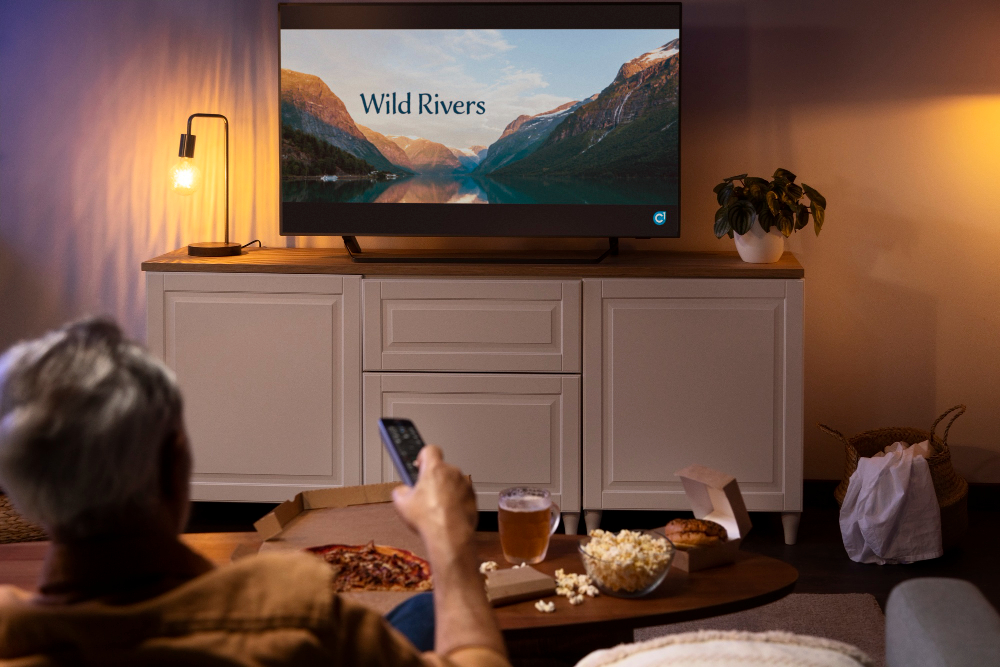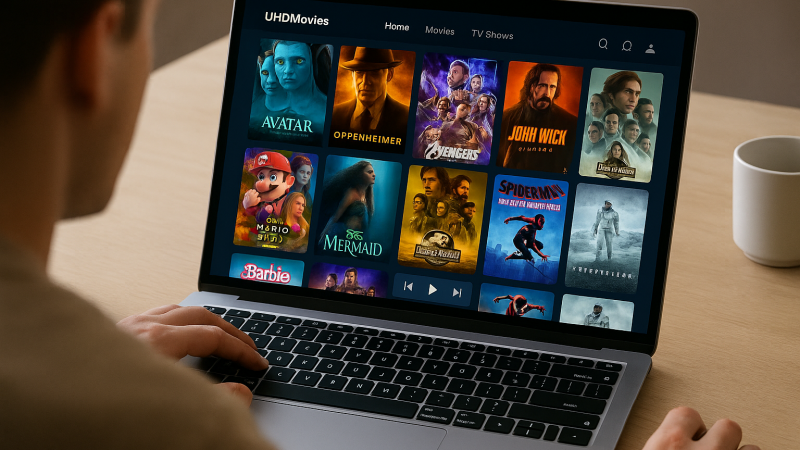Comfortable and Clear: How to Optimize TV Watching for Senior Eyes and Ears

Television has always been a cherished source of entertainment, providing a window to the world and a way to unwind. For seniors, TV often plays an even more significant role, offering a comforting routine and a sense of connection to familiar shows and stories. However, the natural changes that accompany aging, such as diminished vision and hearing, can turn this beloved pastime into a less enjoyable experience. Challenges like small text, rapid dialogue, and unclear sound can make it difficult for seniors to fully engage with their favorite programs. These issues, while common, are not insurmountable. With a few thoughtful adjustments, the TV watching experience can be significantly improved.
Let’s take a look at some practical tips to enhance both the visual and auditory aspects of TV viewing, ensuring that seniors can enjoy their favorite shows in comfort and clarity.
Enhancing Sound Quality with External Speakers or Soundbars
Hearing loss is a common issue that can affect how enjoyable TV watching is for seniors. Poor sound quality or difficulty hearing dialogue can turn a relaxing activity into a frustrating one. Enhancing the sound with external speakers or a soundbar can improve the clarity of speech and overall audio, ensuring that seniors don’t miss a word of their favorite shows.
Soundbars and External Speakers
Soundbars are a simple and effective way to enhance the audio quality of a TV. They are designed to produce clear sound, making it easier to hear dialogue and background music without needing to turn the volume up excessively. External speakers, whether wired or wireless, can also be a good option. They can be placed closer to the viewer, providing a direct audio source that can be adjusted independently from the TV’s built-in speakers.
Setting Up and Adjusting Audio
Setting up a soundbar or external speakers is typically straightforward. Most soundbars connect to the TV via an HDMI or optical cable, and they can be controlled with the TV remote. After setup, adjusting the audio settings can fine-tune the sound for clarity. Increasing the treble can make dialogue clearer, while reducing bass can prevent low-frequency sounds from overwhelming speech. Finding the right balance ensures that all elements of the sound are clear and enjoyable.
Personalized Audio Solutions
For those wondering how to hear TV better, wireless headphones or hearing aids with TV connectivity are excellent solutions. These devices allow seniors to adjust the volume to their preference without affecting others in the room. Many modern hearing aids can connect directly to the TV via Bluetooth, providing clear sound directly to the user’s ears. This personalized audio approach can greatly enhance the TV watching experience, especially for those with significant hearing loss.
Adjusting Screen Settings for Better Clarity
As people age, vision changes are common, and what was once clear on a TV screen may become difficult to see. Adjusting the screen settings can make a significant difference in how well seniors can enjoy their shows. A few tweaks to brightness, contrast, and color settings can transform the viewing experience, making it easier on the eyes without compromising on picture quality.
Brightness and Contrast
The brightness and contrast settings are crucial for a clear viewing experience. Increasing brightness can help make the screen more visible, especially in well-lit rooms or during daylight hours. Conversely, reducing brightness in a dark room can prevent eye strain. Adjusting contrast improves the distinction between light and dark areas on the screen, making details stand out more clearly. A balance between brightness and contrast ensures that the picture is sharp and easy to see without causing discomfort.
Color Settings
Color settings can also impact how clearly seniors can see the screen. Overly saturated colors might strain the eyes, while dull colors can make the picture less engaging. Adjusting the color saturation to a moderate level that suits the viewer’s preferences can help. Additionally, many TVs offer a “Warm” or “Cool” setting for color temperature, which can be adjusted to make the picture more comfortable to look at, depending on the lighting in the room.
Screen Size and Distance
For seniors with vision challenges, screen size and viewing distance are important considerations. A larger screen can make it easier to see details from a comfortable distance. Additionally, sitting closer to the screen can improve visibility without requiring significant adjustments to the TV’s settings. These changes can make a substantial difference in the overall viewing experience.
Utilizing Closed Captioning for Easier Understanding
Closed captioning is a feature that displays dialogue and sound effects as text on the screen, helping viewers follow along more easily. This is particularly useful for seniors who have difficulty hearing or understanding fast-paced dialogue. By enabling closed captioning, seniors can enjoy their favorite shows without missing any important details.
Enabling Closed Captioning
Most modern TVs and streaming services offer closed captioning as an easily accessible feature. To enable it, viewers can navigate to the TV’s settings menu or the settings within their streaming app. Closed captioning can typically be turned on with just a few clicks.
Customizing Captions
Once enabled, closed captioning settings can often be customized for comfort. This includes adjusting the size, color, and background of the text to make it easier to read. Larger text sizes can be helpful for those with vision impairments, while different color options can make the captions stand out against various backgrounds. Customization ensures that the captions are visible and easy to follow, enhancing the viewing experience.
Caption Styles and Preferences
Different shows and movies may have varying styles of dialogue, so it’s important to experiment with caption settings to find the most comfortable setup. For instance, some viewers may prefer captions that are smaller and less intrusive, while others might benefit from larger, more prominent text. Finding the right balance between visibility and comfort will make TV watching more enjoyable and accessible.
Creating a Comfortable Viewing Environment
The physical environment in which seniors watch TV plays a critical role in their comfort and overall enjoyment. From seating arrangements to room lighting, creating a cozy and well-organized space can significantly enhance the viewing experience. This section will provide tips on how to set up the perfect environment for watching TV comfortably.
Seating Arrangements
Comfortable seating is key to a pleasant TV watching experience. Chairs or sofas with proper support can help prevent back and neck strain during long viewing sessions. It’s important to choose seating that promotes good posture, with adequate cushioning and support for the lower back. Adjustable chairs or recliners that allow viewers to change their position easily can also contribute to a more comfortable experience.
Room Lighting
Proper lighting is essential to reduce glare on the TV screen and prevent eye strain. Dimmable lights are ideal for a TV room, as they allow viewers to adjust the brightness according to the time of day and the content being watched. Soft, indirect lighting can create a warm and inviting atmosphere, while eliminating harsh reflections on the screen. Ensuring that the light sources are placed to the sides or behind the TV will help maintain a clear and comfortable viewing experience.
Organizing the Viewing Area
Keeping the viewing area organized and clutter-free can also enhance the TV watching experience. Remote controls, reading glasses, and other essentials should be within easy reach. Using a side table or a remote caddy can help keep these items organized. Additionally, arranging the TV at an appropriate height—usually at eye level when seated—ensures a comfortable viewing angle and reduces neck strain.
Conclusion
Optimizing the TV watching experience for seniors involves a combination of technical adjustments and environmental enhancements. By adjusting screen settings, improving sound quality, utilizing closed captioning, and creating a comfortable viewing environment, seniors can enjoy their favorite shows and movies with greater ease and satisfaction. Small changes can make a big difference, turning TV watching into a truly enjoyable pastime once again. These practical tips empower seniors to tailor their TV setup to their unique needs, ensuring they can continue to relax and be entertained without discomfort.






